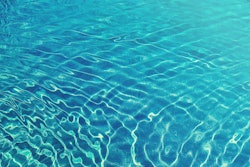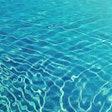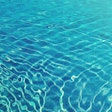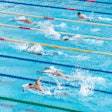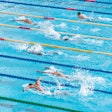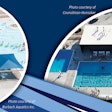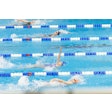To drain or not to drain? Generally, you’ll make life a lot easier on yourself if you leave your outdoor pools filled for the winter, if you follow a few simple steps.
Winterizing a large public or commercial swimming pool requires a keen insight into detail. Why? Because metallic and plastic swimming pool components and equipment are extremely vulnerable to lateral and upheaval forces generated by freezing water. Extreme care must be taken to protect equipment (pumps, heaters and filters, for example) plumbing and pool surfaces.
Log in to view the full article
To drain or not to drain? Generally, you’ll make life a lot easier on yourself if you leave your outdoor pools filled for the winter, if you follow a few simple steps.
Winterizing a large public or commercial swimming pool requires a keen insight into detail. Why? Because metallic and plastic swimming pool components and equipment are extremely vulnerable to lateral and upheaval forces generated by freezing water. Extreme care must be taken to protect equipment (pumps, heaters and filters, for example) plumbing and pool surfaces.
The first question to ask: Should the pool be drained during winterization? If the pool subgrade has adequate drainage to protect against hydrostatic lift, and if the pool is equipped with a pressure relief valve in the bottom, then draining is permissible, provided the climate is mild enough not to create the danger of ground frost upheaval.
Even so, an empty pool is susceptible to weathering. Repetitive freezing and thawing can cause expansion of moisture in concrete and plaster walls, leading to chipping and stress cracks. Painted pools are more likely to chip and flake if drained during the off-season.
If the pool is emptied during the winter, the main drains should be left open to facilitate removal of rain or snowmelt. A mesh cover should be used to trap wind-blown debris, especially leafy materials containing tannins.
Unless the pool is scheduled for major retrofitting and resurfacing, it’s best to leave it filled during the winter. Besides preventing damage to pool surfaces, leaving the pool filled will conserve water and chemicals, and start-up in the spring will be easier. Just follow a few simple steps:
Before draining pipes and equipment, brush and vacuum the pool thoroughly, back wash sand and diatomaceous earth (D.E.) filters, and chemically treat the water.
Begin chemical treatment by superchlorinating with 1-½ pounds of calcium hypochlorite for every 10,000 gallons of pool water. Or, for reduced cloudiness, superchlorinate with 2-½ pounds of lithium hypochlorite per 10,000 gallons. To prevent staining pool surfaces, predissolve the granular shocking compounds.
Guard against algae by adding an initial does of non-foaming, halogen-demand-free polyquarternary algicide. These algicides provide long-term protection against black and green algae, the most common nuisance found during the off-season, and also aid filtration by aggregating small non-filterable particles into filterable units. The result: a cleaner, algae-free pool at spring opening.
To protect pool surfaces during winter, add (according to initial dosage recommendations) a premium-grade metal sequestering agent for stain and scale prevention. Metal sequestraints chemically bond with dissolved metal ions, such as copper and iron, and protect against stains. The proper use of sequestrants during winter closing will also reduce the scale deposits frequently observed at spring opening.
With the pool brushed, vacuumed and chemically treated, we can now direct our attention to winterizing equipment and recirculation piping. However, make sure that the previous chemical addition has recirculated for one complete turnover before draining equipment and pipes.
Water must be removed from all pipes leading to pool inlets if freezing conditions are expected to reach the pipes’ depth. Two options exist: The water level in the pool can be lowered below the inlet level, or the return inlets can be plugged to allow pipes to remain empty. An open drain plug is required at every point in the piping where water might collect.
Freeze damage to equipment is rarely warrantable. Water must be drained from pumps. Remove all drain plugs from pumps and store the plugs in the pump basket. Ensure that all water has been removed.
Cover the motor to protect it from rain, snow and ice, but do not wrap it in plastic, which will cause condensation and rust in the motor.
Finally, break the circuit breaker to prevent accidental engagement of the pump motor. (Note: Before reactivating the pump in the spring, inspect the pump shaft for free movement and thoroughly clean and remove any foreign material from the pump assembly.)
Pool heaters must also be protected against freeze damage. In areas where there is no danger of water freezing and the pool is kept circulating, water should circulate through the heater, even if the water is not being heated.
Where freezing is possible, it’s necessary to drain the water completely from the heater. This can be done by opening the drain valve and allowing all water to drain out of the heater. Also, disconnect the pressure switch to prevent damage from freezing water that may lie in the pressure switch tube after the heater has been drained. Turn off the gas supply to the heater.
All filter types (sand, D.E. and cartridge) must be thoroughly cleaned.
Sand filters should be inspected for mud balls, calcification or old sand. If necessary, remove and discard the sand. Clean the empty filter ranks and drain the water completely. Any sand remaining in the filter must be cleaned. Commercially available filter cleaners are recommended for optimum results. Sand filter access covers should be left open, with screen covers in place to block out rodents or insects.
D.E. and cartridge filters must be completely disassembled during the off-season.
Remove all D.E. powder from the tank and flush with a garden hose if necessary. Clean and inspect D.E. filter grids and cartridges, using a low-foaming filter cleaner. Repair or replace defective grids or cartridges and store all grids and cartridges in a dry area away from direct sunlight. Inside storage is recommended. Open tanks should be covered to exclude windblown dirt and debris.
Chemical feeders and feed pots should be disassembled and cleaned according to manufacturers’ recommendations.
Slurry tanks containing soda ash, muriatic acid or sodium hypochlorite (liquid chlorine) must be emptied and stored for future use.
Excess chemicals should be stored in a safe place away from direct sunlight and possible contamination. Because of the rapid auto-decomposition of sodium hypochlorite, the remaining product should be returned to the supplier or transferred to year-round facilities.
Test kits and reagents should be collected and inventoried. Store kits and reagent solutions in a cool, dry area. Protect against freezing and excessive heat. Keep all kits and reagents out of children’s reach.
Some manufacturers and industry representatives have recommended that test reagents be discarded at the end of each season.
Discarding test reagents is not necessary. Rather, store all reagents and have them tested the following year against a set of good reagents, using recognized test procedures. There is no reason to throw away good reagents.
Remove ladders, life-saving equipment and lifeguard chairs and store them in a dry, protective area. Diving boards should be removed and stored flat in a dry storage area on three or four wooden blocks. Make sure air is permitted to circulate around the blocks.
Shut off the main water supply line. Drain all lines and toilets in the bathhouse, unless heat is provided during the winter. Outside drinking fountains should be covered.
Finally, use a pool cover to protect the pool from vandalism, wind-blown debris and other contamination. Furthermore, the proper placement of a pool cover will make spring opening easier and less costly.
This article originally appeared in the September 1990 issue of Athletic Business.



















